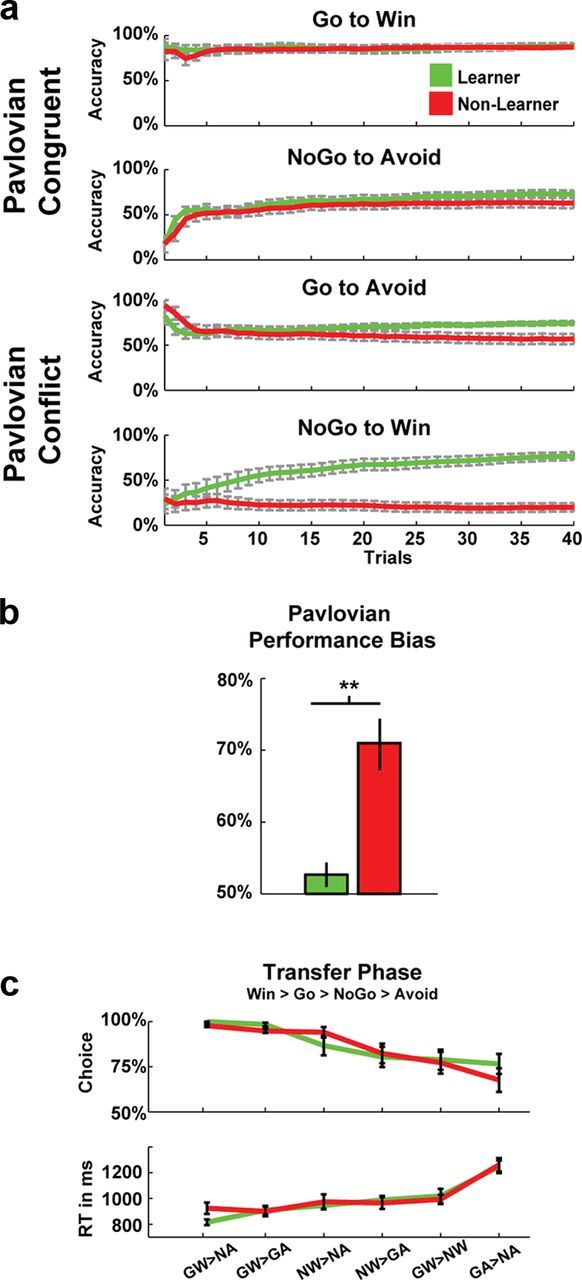Figure 2.

Task performance for Learners and Non-Learners as defined by accuracy in the latter half of the hardest NoGo-to-Win condition. a, Participant performance during training was similar on easy, congruent conditions, but there were large differences in harder conditions characterized by Pavlovian conflict (Go-to-Avoid and NoGo-to-Win). b, Measures of total invigoration on reward conditions and suppression on avoidance conditions were combined to create a single measure of Pavlovian Performance Bias, capturing an individual's aggregate tendency to commit an action in the presence of a reward-predictive cue and to withhold an action in the presence of a punishment-predictive cue across the entire experiment. c, In a posttask forced choice transfer phase, subjects displayed a Win > Go > NoGo > Avoid ordering of preferences. This finding suggests that both groups had a Pavlovian influence during learning, but that the Learner group was somehow able to overcome this bias in the training phase. GW indicates Go-to-Win; GA, Go-to-Avoid; NW, NoGo-to-Win; and NA, NoGo-to-Avoid.
